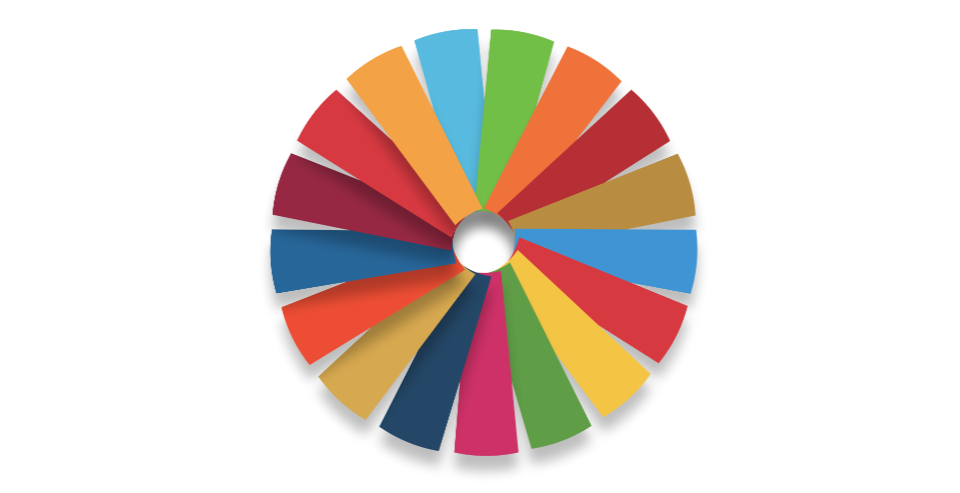With a little help from the pandemic, ALL companies – regardless of size and industry – have finally realized that to remain competitive it is fundamental to speed up digitalization.
Despite the obvious challenges:
- technology creates profound changes in relations with clients, suppliers, partners
- the competences required to innovate are changing at a higher speed than employee capabilities.
Add to that the current situation with:
- post-covid catching up
- skyrocketing costs of energy and raw materials
- dynamic behavior of clients and consumers, and
- a regulatory framework increasingly linked to the Net Zero-emission commitment and environmental no-harm principle in EU.
Faced with this complexity, it is understandable that managers and entrepreneurs prefer to concentrate on solving one problem at a time and try to divide the burden of these challenges among several separate and specialized teams.
However, at policy level it is widely recognized that INTEGRATION of the Digital and Green Transitions is the only way to solve the global challenges addressed by the UN (Sustainable Development Goals) and the EU (Net-Zero targets):
Making decisions for sustainability without a digital approach (IoT, Analytics, Artificial Intelligence, ...) would generate limited and delayed impacts.
On the contrary, digitizing without considering the sustainability of raw materials, supply chains or production methods would lead us to run out of resources even faster than what is already in place.
Therefore, companies must approach Digital and Green as two sides of the same coin:
- the GREEN Transition can be considered a lighthouse indicating the right DIRECTION and supporting DECISIONS to remain relevant in the MARKET,
- the DIGITAL transition becomes the VEHICLE to get there, providing the tools – and DATA – needed to monitor IMPROVEMENTS, modify ACTIONS and guarantee RESULTS.
GREEN TRANSITION -> ZERO EMISSION is the only “risk-free” target!
It should be emphasized that the real focus is “Zero Emissions”, and not “Zero Net Emissions” and fortunately awareness of this important difference is growing as green transition projects are defined and funded.
Italy has the second biggest manufacturing industry in Europe. Therefore, our industrial (energy-consuming) companies MUST define a zero emission strategy as soon as possible.
Settling for just a net-zero emission strategy (that relies on compensation or offsetting activities made by others) is already being labeled as “greenwashing” and we are only at the beginning.
Going forward, the institutions responsible for reaching the overall emission targets may soon have to make hard decisions. In addition to driving R&D in renewable energy, Governments may have to limit “net zero” strategies to those industries and projects inevitable for the transition (e.g. construction of new renewable energy plants to quickly ramp up access to renewable energy) while demanding that all others pursue “full zero” emission strategies and penalizing those who hesitate to take the necessary measures.
Competition will also play its part, before long most industries will have practical examples of companies showing leadership and proving that zero emission is possible. After that, the pressure for “compliance” in the rest of the industry will be relentless!
Therefore, considering the Zero Emission strategy the only viable option from the beginning will give companies much more time to adjust.
Digital Transition -> DATA will help us succeed!
Data is the new currency in the green and digital economy and we produce this value already.
All we have to do is to make it available in a form that allows us to “spend” it and create value for us:
- Public administrations and financial institutions are already requesting that companies document and demonstrate continuous improvement on sustainability KPIs and this trend will increase
- companies all over the world are already turning their backs on suppliers, clients and business partners that cannot demonstrate governance and sustainability KPIs at every stage of their production processes or products’ life cycle (Life Cycle Assessment), based on shared frameworks such as ISO guidelines, EU directives on environmental reporting (CSRD) or EU regulations for the ecodesign of sustainable products (ESPR), sustainability certifications for buildings (eg LEED), SDG from United Nations.
- Consumers are increasingly demanding credible data before making a purchase, not just to compare product differences, but also the differences in environmental (carbon) impact.
The Good News?
We CAN do this!
Just eat the elephant in small pieces.. clearly that’s just to say!
Step-by-step and luckily, the first steps are very intuitive and easy: access to our own data.
Some data is already being collected, but is locked in IT systems and organizational silos. Some data is not being collected today, but could very easily be, practically at zero costs, with IoT and other cloud-based tools.
This data baseline will guide the rest of the process and greatly facilitate decision making.
We DO NOT travel alone!
All industries and most nations are actively pursuing solutions to similar problems (sustainability and climate change).
This will create plenty of opportunities for benchmarking, collaboration and accelerated problem solving, much like the shared success of the Covid-vaccine developed in less than 1 year.
However, companies that don’t create a detailed understanding of their own data, will find it difficult to take advantage of the best practices that will emerge.
Getting started today is like catching up with a person running. Doing it tomorrow will be like catching up with a high-speed train!
The transition is FINANCED!
No other economic transition of society has been supported as much as the Green and Digital transitions in Europe, with Italy as the principal beneficiary.
With both short, mid, and long-term incentives to speed up these transitions, including compensation for abandoning non-sustainable processes and re-skilling, the only risk is NOT being bold enough!


